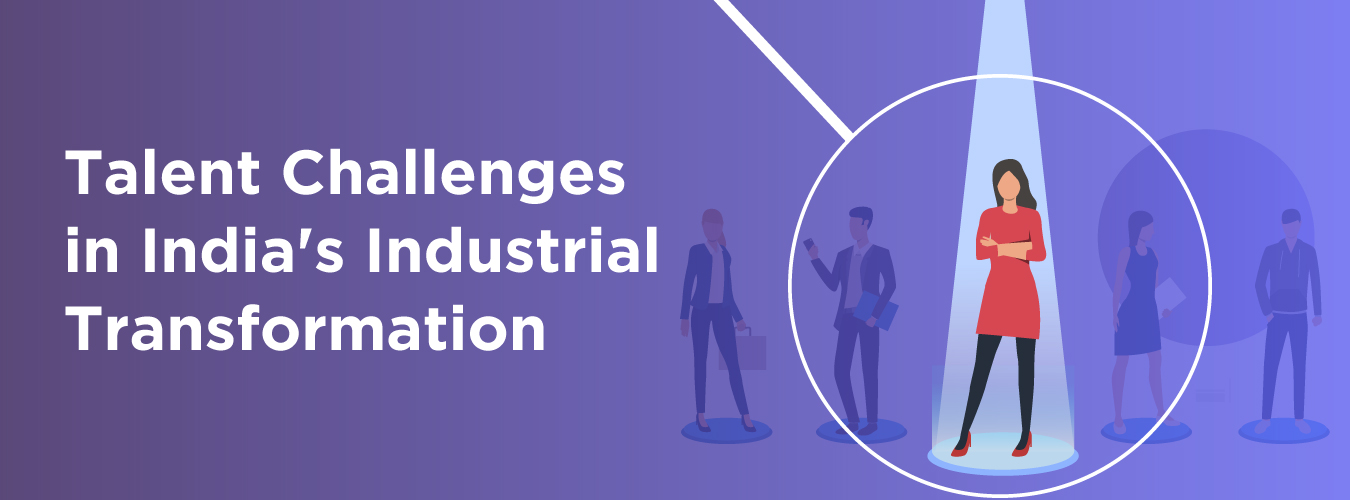Introduction
An analysis of the dynamic landscape of India’s Industrial Transformation reveals a key factor that is often overlooked – the talent gap challenge. In this brief review, we delve into the complex dance between the country’s technological transformation and the constraints of its talent space. Explore the enormous impact these challenges are having on the trajectory of India’s Industrial Transformation and gather insights into promising solutions to the challenges of this transformational journey. Welcome to an exploratory journey into the heart of the Talent Space Challenge in India’s Industrial Transformation.
Table of Contents
- Introduction
- Talent space challenges in India’s Industrial Transformation
- Impact of Talent Space Challenges on India’s Industrial Transformation
- Solutions to talent space challenges in India’s Industrial Transformation
- Conclusion
- Frequently Asked Questions
Talent space challenges in India’s Industrial Transformation
-
Skill Mismatch:
- The workforce usually learns skills at a slower rate than modern technology.
- A big hurdle is ensuring the employees’ competence is compatible with the requirements of new industries.
-
Education Disparities:
- Inequality in the provision of quality education prevents the development of qualified workers.
- Closing education inequality in urban and rural areas is crucial for industrial progress.
-
Lack of vocational training:
- A low focus on vocational education packages ends in a deficit of qualified personnel.
- Employability in specialised sectors could be promoted through encouraging vocational education.
-
Technological Literacy Gap:
- The digital divide remains prevalent, as the majority cannot even be literate in the primary use of technology.
- Acknowledging this distance will be necessary for the workforce to adjust to technology-oriented industries.
-
Talent Retention Challenges:
It would, however, still hinder most industries while looking for those well-qualified people.
To retain talent, it is necessary to ensure that wages are competitive and that one works in an agreeable atmosphere.
-
Limited R&D (R&D) Focus:
As a result of weak R&D investments, there are low innovations but high number of new technologies.
It will entail nurturing an innovative atmosphere.
-
Changing nature of work:
As desk white-collar move into gig and remote work, talent management and skills assessment become hindered.
Therefore, HRs must be sensitive and change their ways of handling things to match this evolving environment.
-
Project-Study Section:
Companies and academic institutions do not typically work together, so this situation does not happen.
These partnerships must be strengthened as they would help ensure that educational programs meet the industries need.
Despite being in a favorable position regarding overcoming the challenges faced by the talent sector and equipping its workforce with competence necessary for responding to the fourth industrial revolution dynamics that promote sustainable technological transformation.
Impact of skills space challenges on India’s commercial Transformation
The following describes approaches that can be used to achieve results in these complex demanding situations. Here’s a concise exploration of their repercussions:
Skills Mismatch:
- They face a massive assignment in a loss of talent and capabilities that mismatch the demands of the industry.
- Education and schooling structures must alternate as quickly as the Industrial Revolution calls for.
Innovation Strain:
- The lack of inventive thinkers and inventors limits the possibility of splendid breakthroughs.
- A lifestyle of innovation gives the foundation for commercial development, making fostering creativity essential.
Global Competition:
- Competing for talent in a globalised India
- Recruiting, in addition to retaining in-position workers, is an essential component of commercial improvement and continuation.
Technology Integration:
- The generation gap in the staff is attributed to rapid technological advancements, which require frequent education.
- Closing those gaps needs to be facilitated via planned methods consisting of deliberate education programs and industry-academia partnerships.
Entrepreneurial Ecosystem:
- The hassle also stretches to marketers, impeding the improvement of business startups and innovativeness.
- Entrepreneurship is vital for a dynamic society composed of courageous and ready workers.
Workforce Diversity:
- This is because the representation of some gender and ethnic organisations in this quarter may be stated to lack comprehensiveness, imparting a challenge to inclusivity.
- Providing opportunities for diversity is also about greater than easy morality in the context of growing business powerhouses.
Policy Reforms:
- Developing new or realigning existing policies within business sectors is pivotal in addressing these talent issues.
- Therefore, governments and relevant bodies should work together to provide a conducive atmosphere for talent growth.
Thus, the effect of talent space challenges on the Indian Industrial Transformation is overwhelming; therefore, the collective initiative of all the parties involved These issues must be tackled to promote effective educational transformation towards providing new business ideas and a competent labour force that can sustain and speed up industrial advancement in Saudi Arabia.
Solutions to talent space challenges in India’s industrial revolution
Addressing these demanding situations is essential for sustaining the momentum of the industrial revolution. Here are a few practical solutions:
Skill Development Initiatives:
- Implementing giant skill improvement programs to bridge the distance between the talents demanded by industries and those possessed by personnel
- Collaborating with academic establishments, vocational training facilities, and industry specialists to lay a curriculum that aligns with industry desires
Technology Integration in Education:
- Embracing advanced technologies like artificial intelligence (AI) and augmented reality (AR) in instructional practices
- Facilitating online getting-to-know systems and publications to make education available to a broader audience, catering to the diverse wishes of the evolving commercial landscape
Industry-Academia Collaboration:
- Establish stronger partnerships among industries and educational institutions to ensure that instructional applications are applicable and current.
- Encouraging internships, apprenticeships, and enterprise visits to provide students with real-world publicity and sensible skills.
Promotion of Entrepreneurship:
- Fostering an entrepreneurial way of life by providing help, investment, and mentorship to aspiring marketers
- Creating incubation centres and startup hubs to nurture innovation and new business ventures
Flexible work models:
- Flexibility becomes more important as the traditional 9–5 work model shifts. Offering flexible schedules and remote work options draws in diverse talent. It adapts to the needs of its employees by being flexible, which improves work-life balance, job satisfaction, and employee commitment.
Employee Upskilling Programs:
- Implementing continuous knowledge of programs within companies to upskill present employees and keep them abreast of present-day enterprise tendencies
- Offering incentives and recognition for employees who actively interact in skill improvement sports.
Diversity and Inclusion Initiatives:
- Promoting diversity in business means actively hiring people from extraordinary backgrounds, genders, and ethnicities.
- Creating an inclusive work way of life that values diverse perspectives and fosters a feeling of belonging amongst personnel
Government Policies and Support:
- Advocating for regulations that inspire skill development and innovation
- Offering economic incentives and tax advantages to corporations investing in employee training and improvement.
By imposing those answers, India can effectively navigate the expertise space-demanding situations posed by its business revolution. The key lies in fostering collaborative environments where academic institutions, industries, and authorities work together to create a professional and adaptable team of workers.
Conclusion
In conclusion, India’s industrial transformation addresses a key obstacle – the talent space challenge. The impact is vast, from skill mismatches to innovation frenzy. However, strategic solutions can pave the way forward. More considerable skills development programmes, technology integration in education, and more vital collaboration between industry and academia are also needed. Developing business skills, adopting flexible business models and prioritising professional skills are essential. Diversity and inclusion policies and supportive government policies further strengthen the way forward. What matters lies in a concerted effort where academia, industry and government work together to form a skilled and adaptable workforce to ensure India’s technological rise in the global arena.
frequently asked questions
1. What are the biggest challenges in talent acquisition?
Talent acquisition faces challenges, growing opposition for skilled experts, evolving job marketplace dynamics, and the need for green use of technology in recruitment methods. Additionally, ensuring a diverse and inclusive team of workers and maintaining an effective company logo are ongoing and demanding situations in expertise acquisition.
2. Why is talent shortage a problem?
Talent scarcity is a problem as it hinders organisational growth and innovation. When there is a lack of qualified professionals in key roles, organisations may also battle to satisfy commercial enterprise demands, enjoy slower development, and face expanded opposition to the available expertise pool. This can result in higher recruitment prices and potential gaps in critical ability sets.
3. What are talent management weaknesses?
Talent management weaknesses frequently stem from inadequate improvement and retention techniques. This may additionally encompass insufficient education programs, lack of succession planning, and useless overall performance control. Weaknesses in expertise control can bring about a better turnover rate, decreased worker engagement, and demanding situations in aligning men’s or women’s desires with organisational goals.









